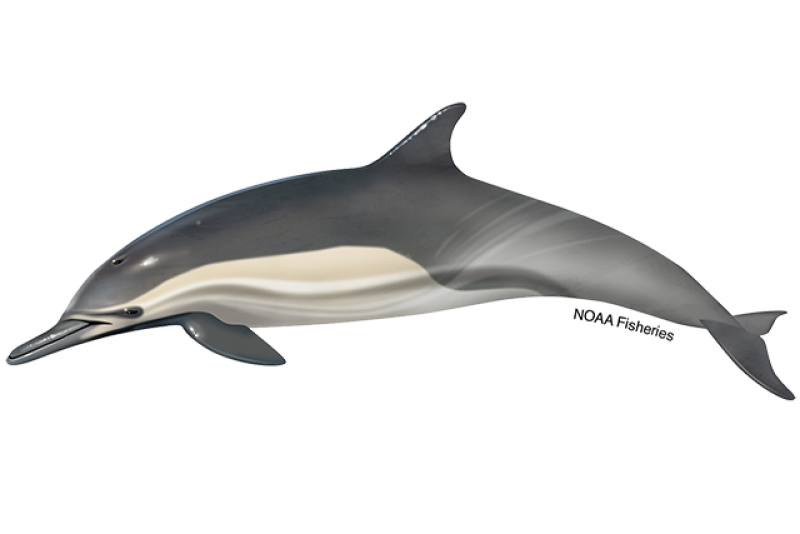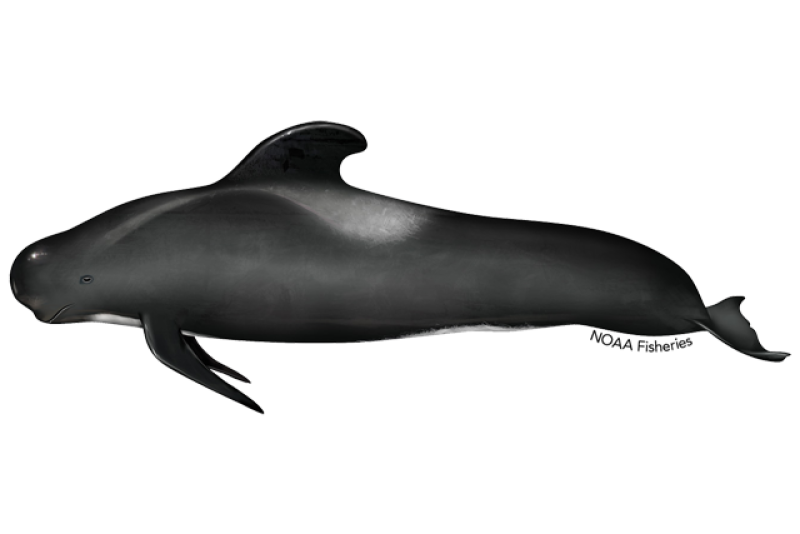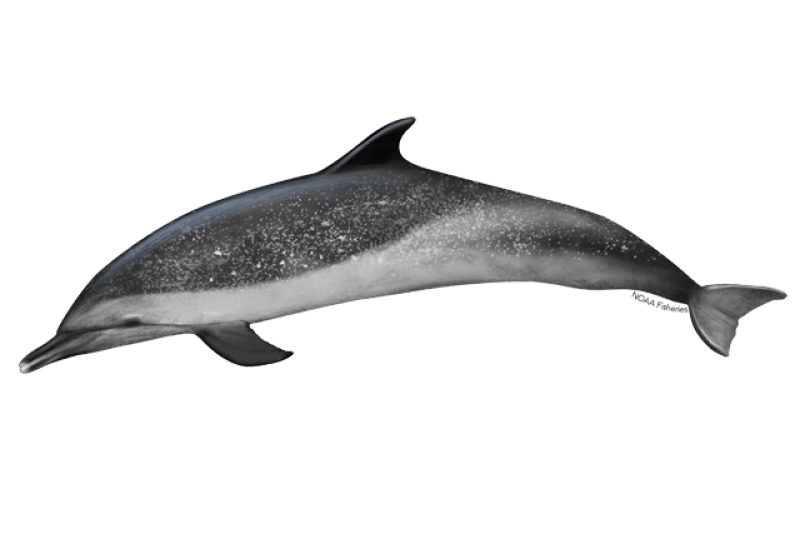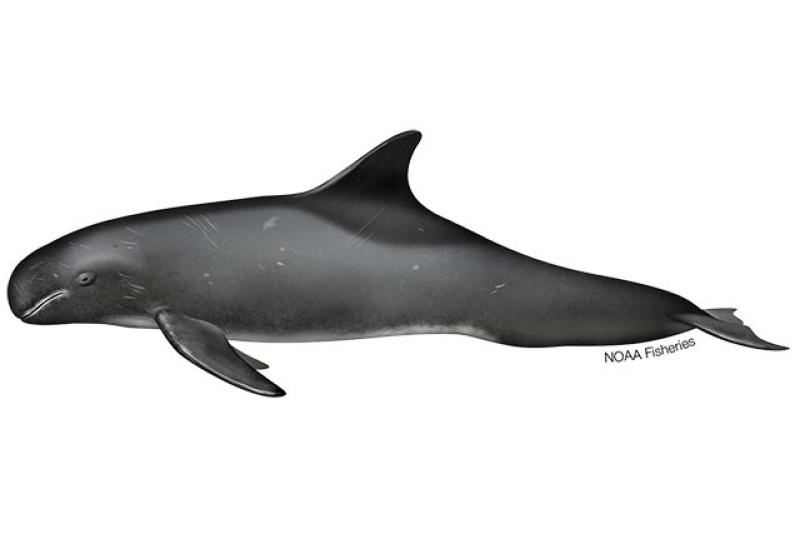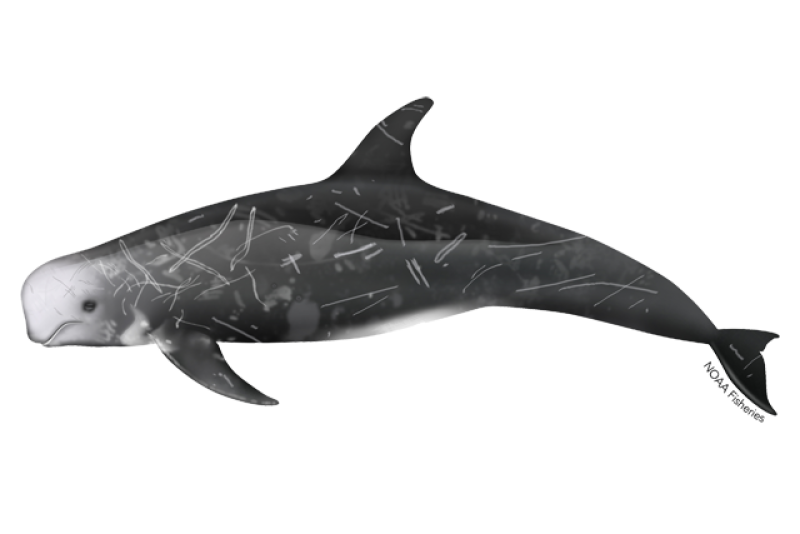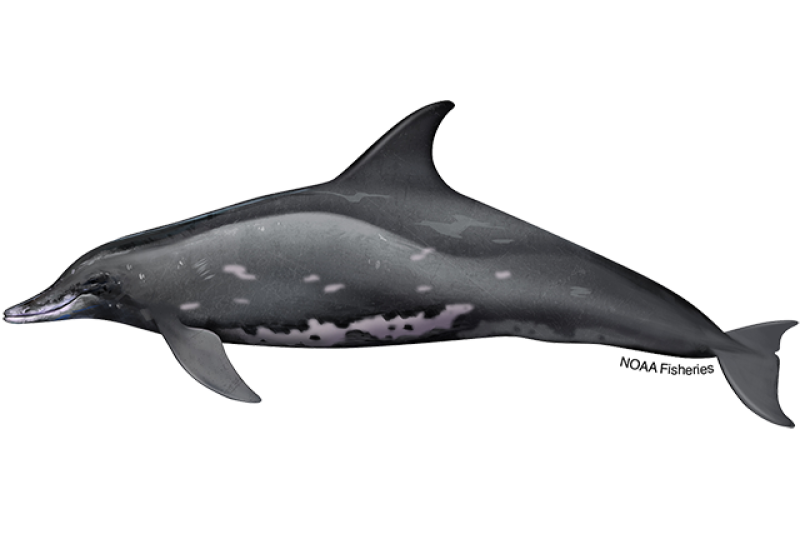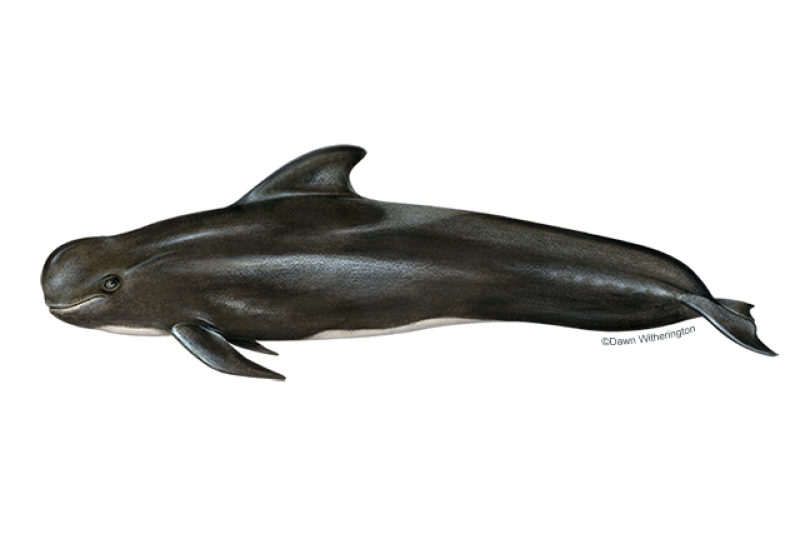Dolphins and porpoises are at the top of the food chain and play an important role in the overall balance of the marine environment. They belong to a group of marine mammals called cetaceans. Marine mammals in the cetacean family include whales, dolphins, and porpoises. These animals are often referred to as “sentinels” of ocean health providing insight into marine ecosystem dynamics. Numerous studies have explored the effects of noise and chemical pollution, habitat degradation, and changes in climate on these animals.
Dolphins and porpoises tend to be social and live in groups. They exhibit complex methods of communication and echolocation making squeaks, buzzes, whistles, and clicks that can be heard from miles away. They are also thought to communicate by slapping the water’s surface with their tails or bodies. They range in size from the small, critically endangered vaquita porpoise to the iconic killer whale—the largest member of the Delphinidae, or dolphin family.
All dolphins and porpoises are protected under the Marine Mammal Protection Act, and some are also listed under the Endangered Species Act. Together with our partners, we work to study, protect, and conserve these fascinating species and their habitats.
Species News
 A false killer whale grabs a mahimahi hiding under a bucket lid, looking very much like an Avenger in the process! Credit: NOAA Fisheries/Ernesto Vazquez (Permit #25754)
A false killer whale grabs a mahimahi hiding under a bucket lid, looking very much like an Avenger in the process! Credit: NOAA Fisheries/Ernesto Vazquez (Permit #25754)
 Stranded juvenile bottlenose dolphin. Credit: Audubon Aquarium Rescue
Stranded juvenile bottlenose dolphin. Credit: Audubon Aquarium Rescue
 A harbor porpoise is retrieved from the rocks at Odiorne Point State Park, New Hampshire. Credit: Seacoast Science Center
A harbor porpoise is retrieved from the rocks at Odiorne Point State Park, New Hampshire. Credit: Seacoast Science Center
 Aerial images comparing the sizes of adult male Bigg’s and Resident killer whales, both taken in the Salish Sea off southern Vancouver Island. Images are scaled to lengths calculated during health research by SR3 SeaLife Response, Rehabilitation and Research. Images were collected by John Durban and Holly Fearnbach using a non-invasive drone authorized by research permit 19091 issued by the US National Marine Fisheries Service (NMFS).
Aerial images comparing the sizes of adult male Bigg’s and Resident killer whales, both taken in the Salish Sea off southern Vancouver Island. Images are scaled to lengths calculated during health research by SR3 SeaLife Response, Rehabilitation and Research. Images were collected by John Durban and Holly Fearnbach using a non-invasive drone authorized by research permit 19091 issued by the US National Marine Fisheries Service (NMFS).
Multimedia
 Humpback whales swimming underwater. Credit: Kogia.org
Humpback whales swimming underwater. Credit: Kogia.org
Research
Passive Acoustic Technologies
We record sounds in the ocean to learn about marine mammals and other ocean species, working with partners around the globe.
Publications by Northeast Passive Acoustics Branch Staff
We regularly publish their findings in scientific journals and Center-produced documents.
Common Bottlenose Dolphin Ecotypes of the Western North Atlantic Revisited
Research proposing the recognition of a distinct species of coastal bottlenose dolphin.
Cetacean Genomes Project Team
Meet the scientists of the "Cetacean Genomes Project" which aims to facilitate generation of reference genomes of all cetacean species.
Understanding Sound in the Ocean
Levels of underwater noise from human activities—including from ships, sonar, and drilling—have increased dramatically.





